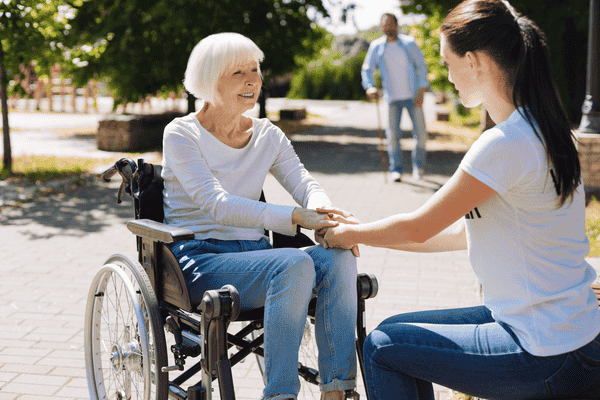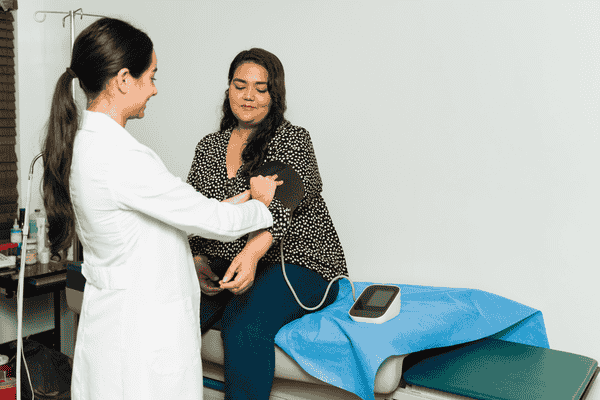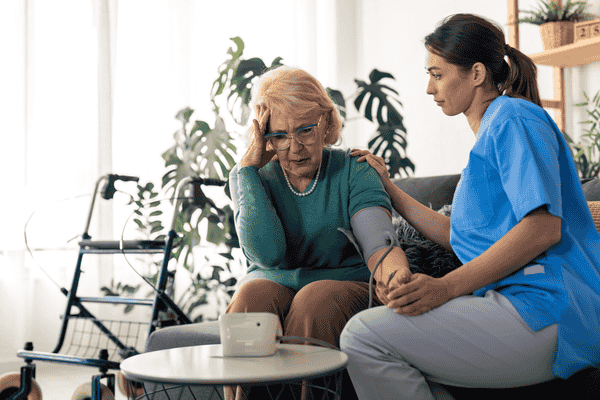Imagine walking into a healthcare facility where every patient, regardless of their condition, is comfortably positioned in a way that maximizes their mobility and minimizes discomfort. Now, think about the many times you or someone you know has felt uneasy, or even in pain, during a medical procedure due to poor positioning. Proper patient positioning is not just a technical detail—it’s a fundamental aspect of healthcare that can significantly impact a patient’s experience and outcome.
In this blog, we’ll delve into the importance of proper patient positioning, exploring techniques, tools, and best practices that can revolutionize the way care is delivered. We’ll also share stories and scenarios that highlight how the right approach to positioning can make all the difference in patient care.
The Quiet Struggle: A Patient’s Perspective
Meet Sarah, a 65-year-old woman recovering from hip surgery. During her stay in the hospital, Sarah often found herself struggling to find a comfortable position. Despite the nurses’ best efforts, she would end up with back pain from lying in one position for too long. Her physical therapy sessions, essential for her recovery, were challenging because her discomfort made it hard for her to focus on the exercises.
Sarah’s experience is not unique. Many patients, especially those with limited mobility, suffer from discomfort during their hospital stays or medical procedures due to improper positioning. The importance of positioning extends beyond comfort; it directly affects a patient’s recovery and overall health outcomes.
Understanding the Importance of Proper Patient Positioning
Proper patient positioning is about more than just comfort; it’s about enhancing mobility, preventing complications, and ensuring the safety of both patients and healthcare professionals. When patients are correctly positioned, they are more stable and secure, which is crucial during medical procedures, physical therapy, and daily care routines.
For instance, in Sarah’s case, proper positioning could have prevented her back pain and made her physical therapy sessions more effective. Correct positioning would have provided the necessary support to her healing hip while also preventing pressure sores, which are a common risk for patients who remain in one position for too long.
The Benefits of Proper Patient Positioning
1. Improved Comfort and Reduced Pain
One of the most immediate benefits of proper patient positioning is the alleviation of discomfort and pain. Patients who are positioned correctly experience less strain on their muscles and joints. For example, using a wedge cushion to elevate Sarah’s legs while she was lying down could have eased the pressure on her lower back, providing her with much-needed relief.
2. Enhanced Mobility and Faster Recovery
Proper positioning plays a crucial role in enhancing mobility, especially for patients undergoing rehabilitation. By ensuring that patients are correctly aligned, healthcare professionals can help them perform physical therapy exercises more effectively, leading to quicker recovery. In Sarah’s case, proper positioning during her therapy sessions could have facilitated better movement and helped her regain her strength more rapidly.
3. Prevention of Complications
Incorrect positioning can lead to serious complications, such as pressure ulcers, deep vein thrombosis (DVT), and musculoskeletal injuries. These complications not only prolong a patient’s hospital stay but also increase the overall cost of care. Proper positioning, on the other hand, helps in maintaining adequate blood circulation and reduces the risk of such complications.
4. Improved Patient Outcomes
When patients are positioned correctly, they are more likely to have positive outcomes. For instance, during surgery, proper positioning ensures that the surgical site is easily accessible, reducing the risk of complications and improving the success rate of the procedure.
The Role of Medical Positioning Aids
To achieve proper patient positioning, healthcare professionals often rely on medical positioning aids. These aids are designed to provide support and ensure that patients are positioned correctly, whether they are lying down, sitting, or undergoing a procedure.
1. Sensory Ball Cushions
Sensory ball cushions are versatile aids that can be used to improve a patient’s seated position. These cushions help distribute pressure evenly and promote active sitting, which is particularly beneficial for patients with limited mobility. For Sarah, using a sensory ball cushion during her physical therapy sessions could have helped her maintain better posture and engage more effectively in her exercises.
2. Dual Motor Lift Chairs
Dual motor lift chairs are especially useful for patients who have difficulty transitioning from sitting to standing positions. These chairs can be adjusted to lift the patient gradually, reducing the risk of falls and injuries. If Sarah had access to a dual motor lift chair, her transitions during therapy and daily activities could have been much smoother and safer.
3. Wet Area Wheelchairs
For patients who require hydrotherapy or need to move around in wet environments, wet area wheelchairs are indispensable. These wheelchairs are designed to withstand water exposure and provide safe mobility in environments like swimming pools or showers. While Sarah did not require this specific aid, many patients benefit from wet area wheelchairs in their rehabilitation processes, especially when aquatic therapy is part of their treatment plan.
Techniques for Proper Patient Positioning
Healthcare professionals must employ specific techniques to ensure that patients are positioned correctly. These techniques not only improve patient comfort but also prevent injuries to both the patient and the caregiver.
1. Utilizing Proper Body Mechanics
Healthcare professionals should always use proper body mechanics when positioning patients. This involves bending at the knees, keeping the back straight, and using the legs to lift rather than the back. Proper body mechanics are essential to avoid injuries to the caregiver and ensure that the patient is moved safely.
2. Making Necessary Adjustments
Each patient is different, and their positioning needs will vary based on their condition. Adjustments such as elevating the head of the bed, using pillows for support, or changing the position of medical equipment can make a significant difference in patient comfort. For Sarah, small adjustments to her bed position could have alleviated her discomfort and made her hospital stay more bearable.
3. Considering the Healthcare Setting
Different healthcare settings require different positioning techniques. For example, in an ICU, patients may need to be turned frequently to prevent pressure sores, while in a surgical setting, positioning must ensure that the surgical site is accessible and the patient is stable.
The Vital Role of Physical Therapists and PTAs
Physical therapists (PTs) and physical therapist assistants (PTAs) are key players in ensuring proper patient positioning. Their expertise in anatomy, biomechanics, and therapeutic techniques allows them to position patients in a way that maximizes comfort and mobility while minimizing the risk of injury.
1. Expertise in Positioning Techniques
PTs and PTAs have a deep understanding of the musculoskeletal system and how it relates to functional mobility. This knowledge enables them to identify the best positioning strategies for each patient, ensuring that the patient’s body is aligned correctly during therapy and other activities.
2. Collaborative Approach
PTs and PTAs often work closely with other healthcare professionals, such as nurses and physicians, to develop comprehensive care plans that include proper positioning. This collaborative approach ensures that all aspects of the patient’s care are aligned, leading to better outcomes.
3. Continuous Education and Training
The field of patient positioning is constantly evolving, and PTs and PTAs must stay updated on the latest techniques and tools. Continuous education and training are essential for these professionals to provide the best care possible.
Common Medical Procedures Requiring Patient Positioning
Proper patient positioning is critical in many medical procedures, from therapeutic exercises to surgeries. Let’s explore a few scenarios where positioning plays a vital role:
1. Therapeutic Exercises
During therapeutic exercises, positioning is key to targeting specific muscles and joints. Proper positioning ensures that the exercises are effective and that the patient is safe. For example, when Sarah was performing leg lifts to strengthen her hip muscles, proper positioning helped her engage the correct muscles and avoid strain on her lower back.
2. Gait Training
Gait training is essential for patients recovering from injuries or surgeries that affect their ability to walk. Proper positioning during gait training helps patients maintain balance and coordination, reducing the risk of falls.
3. Balance Training
Balance training exercises are designed to improve a patient’s stability and prevent falls. Proper positioning during these exercises ensures that the patient is safe and can perform the exercises effectively.
Advances in Medical Positioning Aids
The field of medical positioning aids is continually advancing, with new technologies and designs that improve patient comfort and safety.
1. Integration of Sensor Technology
One of the most exciting developments in medical positioning aids is the integration of sensor technology. Sensors can provide real-time feedback on a patient’s positioning, allowing healthcare professionals to make immediate adjustments to prevent complications such as pressure ulcers.
2. Innovative Aids for Enhanced Positioning
New aids are being developed with a focus on ergonomic design and patient comfort. For example, sensory ball cushions and dual motor lift chairs are designed to provide better support and reduce the risk of injury.
The Importance of Training and Education
For healthcare professionals, proper training and education are essential to mastering patient positioning techniques. Continuous education ensures that healthcare providers stay updated on the latest advancements in the field and can provide the best care possible.
Conclusion: The Impact of Proper Patient Positioning
In conclusion, proper patient positioning is a critical aspect of healthcare that directly impacts patient comfort, mobility, and outcomes. By employing the right techniques and using advanced positioning aids, healthcare professionals can ensure that patients like Sarah experience less discomfort, recover more quickly, and have a better overall experience during their care.
As the field of patient positioning continues to evolve, it is essential for healthcare professionals to stay informed and continually improve their skills. By prioritizing patient positioning, we can enhance the quality of care provided and ensure that every patient receives the comfort and support they need.













